If I asked you to name your three favorite Italian dishes, what would you say? Chances are, unless you have a sweet tooth and include tiramisu, all three of your choices have some variety of Italian tomatoes as an ingredient.

Italian cuisine is known for its rich, flavorful dishes, many of which prominently feature tomatoes as an ingredient. From classic pasta sauces to fresh salads, tomatoes are an essential part of Italian cooking.
The diversity of Italian tomatoes is truly incredible. From small cherry tomatoes to large, meaty beefsteak varieties, there is a tomato to suit every dish and every taste. San Marzano tomatoes, with their sweet, tangy flavor and thick flesh, are a favorite for making sauce and pizza. Roma tomatoes, with their firm texture, are often used for canning and cooking. And heirloom varieties, with their unique flavors and shapes, are prized by chefs and home cooks alike.
But it’s not just the variety of Italian tomatoes that makes them special. The soil and climate of Italy, with its hot summers and mild winters, provide the perfect growing conditions. And the long tradition of Italian farming, with its emphasis on sustainable, organic practices, ensures that these tomatoes are of the highest quality.
So the next time you enjoy a delicious Italian dish, take a moment to appreciate the tomatoes that made it possible. From San Marzanos to Pachinos, these flavorful, versatile fruits are an integral part of the Italian culinary experience.
History of tomatoes in Italian cooking
Tomatoes are such a quintessential part of Italian cooking that you’d be forgiven for assuming that has always been the case. It hasn’t.
Tomatoes are native to the Americas, and were brought to Europe by Spanish explorers in the 16th century. Initially, they were not widely cultivated or eaten, as many Europeans believed them to be poisonous. It wasn’t until the late 18th century that tomatoes began to gain popularity in Italian cuisine. This may have been initiated by a belief that they were an aphrodisiac.
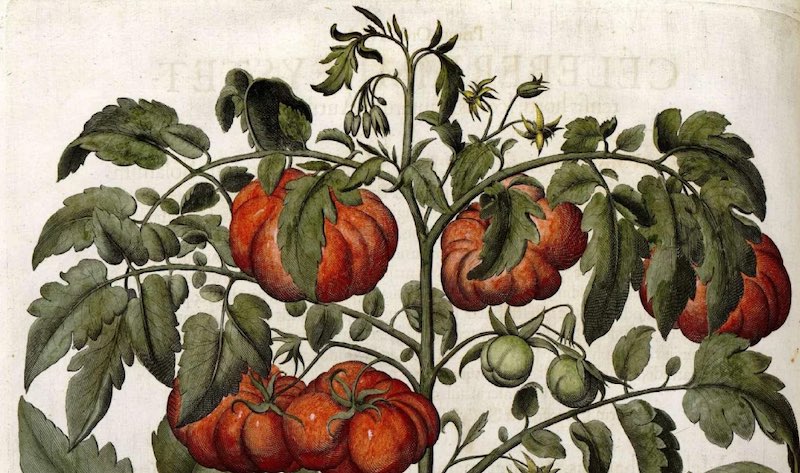
As tomatoes became more widely available and their health benefits were recognized, Italian cooks began incorporating them into their dishes. They were initially used as a garnish or a condiment, but eventually found their way into many classic Italian dishes such as sauce and pizza.
The history of tomatoes in Italian cuisine may be short, but their impact on the country’s culinary traditions has been profound. Without these flavorful, versatile fruits, many of Italy’s most beloved dishes would not exist.
Preparation of Italian tomatoes
There are many different ways to prepare tomatoes for Italian cooking, each with its own unique flavor and texture.
- Concentrato (paste): Thick, rich tomato paste made by cooking tomatoes down to a concentrated consistency. It is often used as a base for sauces, soups, and stews, or as a condiment for meats and vegetables.
- Passata (sauce): Smooth, strained tomato sauce made by pureeing cooked tomatoes and removing the seeds and skins. It is often used as a base for soups, stews, and sauces, or as a topping for pasta and pizza. (Check out our homemade Passata recipe!)
- Polpa (crushed): Coarsely ground tomato sauce made by peeling, seeding, and crushing cooked tomatoes. It has a slightly chunky texture and a bold, flavorful taste. It is often used in Italian dishes such as sauce and stews, or as a condiment for meats and vegetables.
- Pelati (peeled): Whole, peeled tomatoes that have been canned in their own juices. They are often used in Italian cooking as a base for sauces, soups, and stews.
- Secchi (dried): Sundried, salted tomatoes that have been preserved in oil. They have a rich, intense flavor and a chewy texture. They are often used as a condiment or an ingredient in Italian dishes such as soups, pastas, and sandwiches
Varieties of Italian Tomatoes
Italian tomatoes come in dozens of varieties, each with its own unique flavor, texture, and shape. Some of our favorite varieties include:
San Marzano
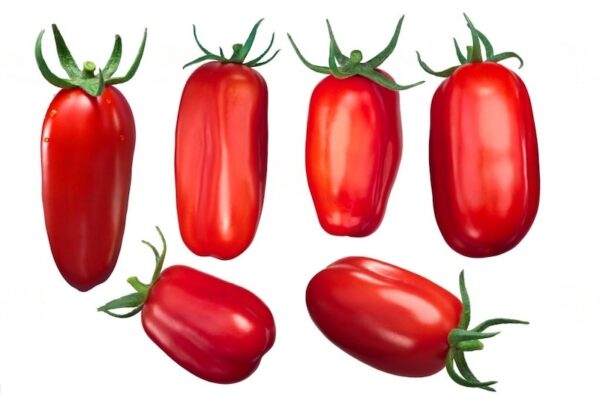
Considered the “King of tomatoes”, San Marzanos are known for their sweet, tangy flavor and thick flesh. They are often used in sauces and on pizzas, and are prized by chefs and home cooks alike. San Marzano tomatoes are grown in the volcanic soil of the Sarno River Valley, near Mount Vesuvius, and are considered to be some of the best tomatoes in the world. They’re so good they get the “Champagne” treatment – if they’re not from the Nocerino Sarnese area in Campagna, they’re not really San Marzanos.
Roma

tomatoes are a versatile, firm-fleshed variety that is often used for canning and cooking. They have a slightly sweet, slightly acidic flavor and a meaty texture.
Datterini
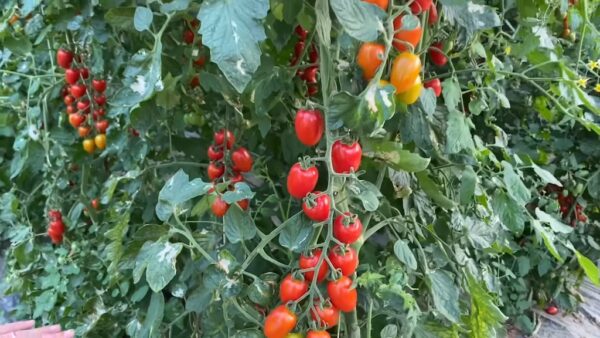
tomatoes are small, elongated tomatoes with a sweet, delicate flavor. They are often used in Italian preserves and sauces.
Learn more about Datterini tomatoes
Cuore di Bue
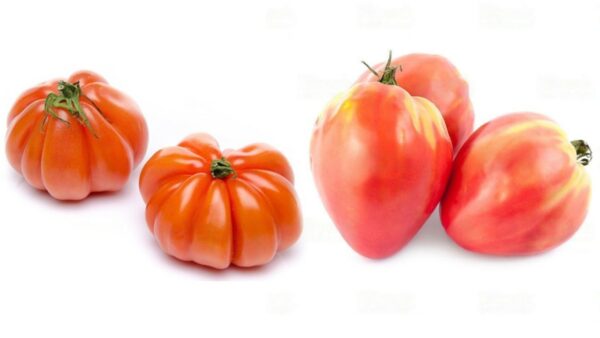
tomatoes are large, round tomatoes with a juicy, meaty texture and a mild, slightly sweet flavor. They are often used in Italian dishes such as salads and sandwiches.
Learn more about Cuore di Bue tomatoes
Corbarino
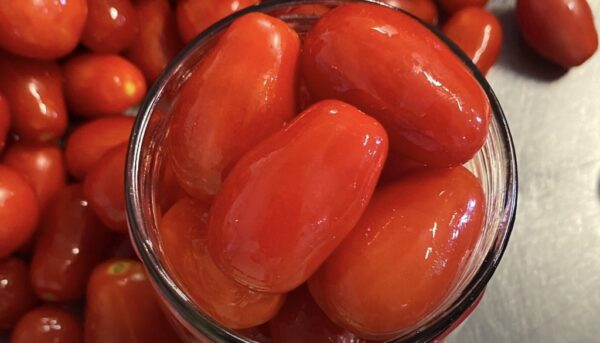
tomatoes are large, elongated tomatoes with a firm, meaty texture, and a rich, full flavor. They are often used in Italian dishes such as stews and sauces.
Learn more about Corbarino tomatoes
Costoluto Genovese/Fiorentino
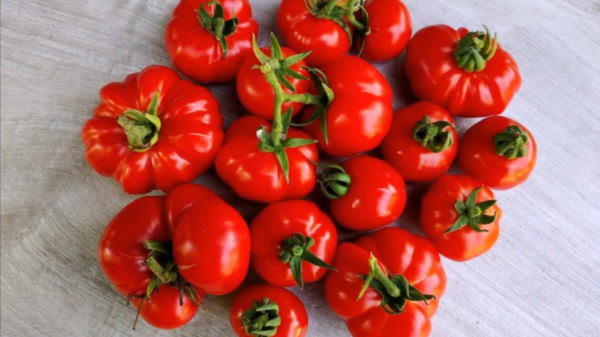
tomatoes are heirloom varieties with a ribbed, flattened shape and a rich, full flavor. They are often used in Italian dishes such as sauce and pizza.
Learn more about Costoluto Genovese and Costoluto Fiorentino tomatoes
Pachino

tomatoes are small, round tomatoes with a sweet, slightly acidic flavor. They are often used in Italian cuisine for their intense flavor.
Learn more about Pachino tomatoes
Piennolo del Vesuvio
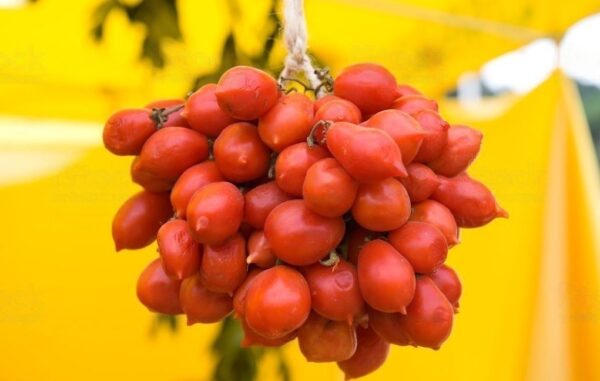
tomatoes are a unique, heirloom variety with a long, stringy shape and a rich, complex flavor. They are grown in the volcanic soil of Mount Vesuvius, which imparts a distinct, rich flavor
